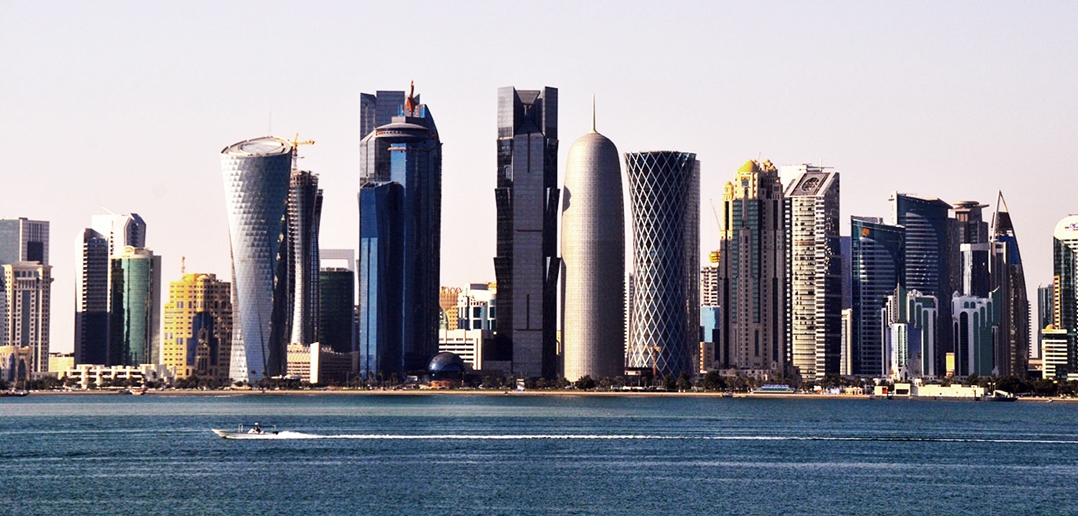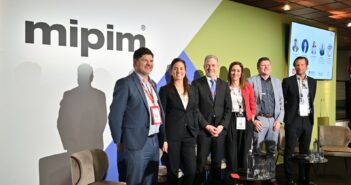In the years immediately preceding the oil price crash, investors based in the Middle East were among the largest contributors to cross-border capital flows. Although they pursued multiple asset classes, their focus on real estate was particularly strong. This reflected both their historical affinity for foreign real estate acquisitions, and a recognition of the stability of returns available in the real estate markets of the US and Europe.
Over the course of 2014, investors from the Middle East poured a total of 14.1 billion USD into the global real estate market. Qatar emerged as the main regional player, spending 4.9 billion USD on foreign real estate in 2014. This number rose considerably in 2015, to 5.24 billion USD in the first half of the year alone. Analysts predicted that Middle Eastern investors would spend an average of 15 billion USD annually on direct real estate investments overseas.
Between January and September 2015, Middle Eastern sovereign wealth funds spent a total of 6.5 billion USD on 38 overseas property transactions. As late as fall 2015, the outlook for continued global property investment originating in the Middle East was still strongly positive.
When oil prices plummeted, this outlook underwent a thorough and necessary adjustment. Oil prices had already begun to decline in mid-2014, but it wasn’t until they reached a 13-year-low in the winter of 2015 that the full impact of the price fluctuation was truly felt. Saudi Arabia posted a 98 billion USD state budget deficit in 2015, and other GCC governments dealt with similar hits to their state coffers.
However, these coffers have by no means been emptied. Governments in the region are adjusting to the price crash by implementing economic diversification strategies and protecting their remaining capital with investments into relatively secure sectors – including real estate.
Qatari investors are being particularly active and agile in terms of pursuing economic diversification and global investments. Qatari sovereign wealth funds and major institutional investors remain active in the global real estate market, but so do many of the smaller, “non-celebrity” players.
Naseba has conducted extensive research over the course of two years into the Qatari market and established a network of connections with Qatari investors. Over the course of our research, a series of clear investor profiles have emerged for royal families, family businesses, and high net worth individuals.
Qatari royal families are often advised by experienced investment bankers and CEOs. Their net worth lies in the range of multiple billion dollars, with access to state funding. They favour ticket sizes of over 100 million USD. Their focus lies mainly in 5-star, income generating properties in major tier 1 cities, and they are likely to fund projects themselves through equity. Generally, when royal families invest in real estate, their advisors work through a team to appraise each opportunity. The investment procedures often involve a face-to-face meeting with the owners or representatives of the owners, where a negotiation is made on the proposed offer and a deal is finalised when an agreement has been reached. Funds are always available to deploy, with a one to three month timeline from sourcing to deployment.
Family businesses tend to be well-established, with specialised officers who are responsible for investment decisions. However, the final decision making authority lies in the hands of the family members. The net worth of the business as a whole is usually around 500 million USD, with a ticket size of over 100 million USD. Luxurious properties in tier 1 cities are a major focus for them, and they have the capacity to fund investments through 100 percent equity, but will seek bank financing when necessary. When a family business invests, properties are vetted through an investment committee. Upon completion, a recommendation is made to the head of the family for a decision to proceed with the review and all negotiations. The timeline from sourcing to deployment tends to range between three and six months.
High net worth individuals usually have a net worth of over 200 million USD, and a ticket size of 40 million USD or more. They employ both self-funding and external funding. Investment decisions are purely based on the interests of the individual. If the individual is interested in a real estate investment opportunity and the ticket size is acceptable, then third party appraisals and discussions usually precede a swift decision.
Investment firms source their funding from proprietary and third party funds. Their mandates are decided based on the needs of their fund and their private wealth clients. The fund size tends to start at 100 million USD, with a ticket size of around 20 million USD. Their average investment term is 5 years or more, and investment decisions are based on recommendations by members of the board and relevant committees. Investment firms pursue all necessary due diligence and negotiations, and the timeline from sourcing to deployment ranges from three months to a year.
In terms of asset types, we have identified the top three most common investor mandates for Europe and the Nordic region. Based on our research, these mandates cover three categories: commercial, hospitality and residential properties.
Qatari investors are interested in commercial properties in Western Europe and Scandinavia. They prefer properties with a single rated tenant with a long-term lease of 12 years and over, providing the opportunity for an increase in rent. The ideal ticket size for these investors would be 50 to 75 million USD equity, with the option of co-investment. They look for income and capital gains over a three to five year holding period. Returns are sought in the form of an IRR of 10 percent, with an 8 percent cash-on-cash yield distributed quarterly, and an LTV of 70 percent at most.
Hospitality is a key sector for Qatari investors, particularly hotels and luxury resorts in tier 1 cities such as Paris, Rome, London, Madrid, Frankfurt, Oslo and Stockholm. Ideally, these would be 5-star properties encompassing at least 150 rooms, with a ticket size of 100 million USD or more. Qatari investors tend to seek complete ownership in income generating properties.
Residential properties in the US and Europe are also highly attractive to Qatari investors. They are interested in luxury multi-family homes, apartments, villas and castles with the possibility for property and rent upgrade. Investors tend to seek complete ownership, and cash on cash returns of over 6.5 percent. Property with leverage is usually acceptable, and investors prefer to work with a third party company to manage the property.
_______________________________________________________________________________________
Naseba is currently working with over 300 Qatari investors to organise a private investor meeting, at which investors will be introduced to real estate asset managers and project owners who are able to provide them with investment opportunities meeting their.
Join them at MIPIM 2016. Register here to attend!



